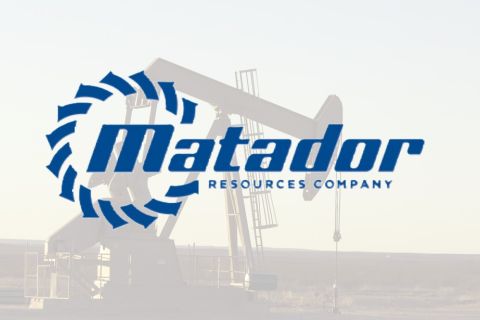
(Source: Shutterstock.com)
Many oil and gas companies consider ESG reporting a mixed blessing. Small and mid-sized companies may question whether the cost and effort of producing ESG reports, which can be significant, are worth the trouble. But the good news is that we’re seeing consistent, meaningful ESG reporting becoming a critical element for many organizations and shareholders.
Shareholders and investors have started expecting energy companies to manage their impact on the environment, create a diverse workforce, ensure the integrity of their data and address governance issues like board diversity and business ethics.
With increasing expectations for thorough and transparent ESG reporting, companies that are proactive in developing an ESG reporting strategy and maximizing the reliability of these metrics will be better-positioned to satisfy institutional investors and other stakeholders who have a strong interest in ESG performance.
Since ESG reporting is not currently mandated as a compliance requirement, it is up to the individual organization to determine what and how ESG information should be shared.
So how can oil and gas companies effectively share ESG details with their constituents? What do they need to include in their ESG reporting? What do shareholders and investors want to hear from companies, particularly those in the oil and gas industry who are facing energy transition plans?
ESG reporting frameworks
To date, no single framework has been universally adopted for ESG reporting. Without one standardized way to report on these initiatives, it is difficult to compare results among peers. However, there are several frameworks that are widely used. As more companies establish reporting programs, these four sustainability reporting frameworks have gained traction:
- GRI Standards
- Integrated Reporting Framework
- SASB Standards
- Task Force on Climate-Related Financial Disclosures (TCFD)
Applying these frameworks can help your company identify risks and shape your narrative in a format that investors will appreciate.
Regulatory requirements
In its annual announcement of short and long-term regulatory actions for the coming year, the SEC listed disclosures relating to climate risk, human capital, including workforce diversity and corporate board diversity. The announcement was a clear indication of the interest in this topic, especially since the newly appointed SEC chair Gary Gensler has expressed an interest in the topic.
On March 15, 2021, the SEC issued a request for public comment on climate change disclosures. More than 400 individual comment letters were submitted over the three-month comment period, with varying positions on the mandate and methodology for reporting. While the comments are still being considered by the SEC, the nature of the comment letters themselves elude to many companies accepting that some form of climate-related disclosure requirements will be regulated in the future.
It’s important to remember that the SEC’s role involves regulating the reporting and disclosure of information. Regardless of the opinions, views, or concerns of the SEC Chair, the SEC will stay in its lane of supporting transparency and disclosure.
The SEC cannot tell companies, for example, to reduce their carbon emissions. That would be something that would have to work its way through Congress, with potential targets being set by the current administration.
What the SEC can provide is disclosure standards to drive transparency, consistency and support comparability for the market. Legislation passed in the House this June requires annual proxy statements to disclose “a clear description of the views of the issuer about the link between ESG metrics and the long-term business strategy of the issuer; and a description of any process the issuer uses to determine the impact of ESG metrics on the long-term business strategy of the issuer.”
Future legislation is expected to further define ESG metrics, and disclosures and the requirements that are to be disclosed.
More than likely, it’s only a matter of time before ESG reporting becomes a compliance necessity. To stay ahead and shape their narrative, oil and gas companies would be wise to begin planning their reporting structure now.
About the Author
 Greg Englert is a partner of Risk Advisory Services at Weaver, a Texas-based national accounting firm. As the Service Leader for ESG Reporting, he works with a variety of companies and investors to develop their ESG reporting programs. His practice has deep experience optimizing risk and compliance functions while solving internal control environment challenges.
Greg Englert is a partner of Risk Advisory Services at Weaver, a Texas-based national accounting firm. As the Service Leader for ESG Reporting, he works with a variety of companies and investors to develop their ESG reporting programs. His practice has deep experience optimizing risk and compliance functions while solving internal control environment challenges.
Recommended Reading
Elk Range Royalties Makes Entry in Appalachia with Three-state Deal
2024-03-28 - NGP-backed Elk Range Royalties signed its first deal for mineral and royalty interests in Appalachia, including locations in Pennsylvania, Ohio and West Virginia.
Which Haynesville E&Ps Might Bid for Tellurian’s Upstream Assets?
2024-02-12 - As Haynesville E&Ps look to add scale and get ahead of growing LNG export capacity, Tellurian’s Louisiana assets are expected to fetch strong competition, according to Energy Advisors Group.
Marketed: Confidential Seller Certain Mineral, Royalty Interests in Louisiana
2024-02-13 - A confidential seller retained RedOaks Energy Advisors for the sale of certain mineral and royalty interests in Louisiana.
Aethon Cuts Rigs but Wants More Western Haynesville Acreage
2024-03-31 - Private gas E&P Aethon Energy has drilled some screamers in its far western Haynesville Shale play—and the company wants to do more in the area.
Matador Bolts On Additional Interest from Advance Energy Partners
2024-02-27 - Matador Resources carved out additional mineral and royalty interests on the acreage it acquired from Advance Energy Partners for $1.6 billion last year.




